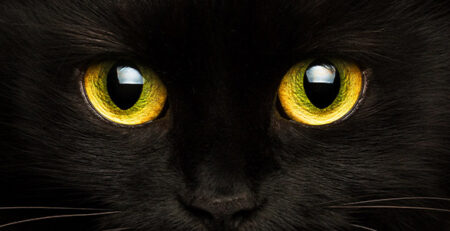Mr. dog and Mrs. cat, please favor the documents: registration and microchip! What about you, have you microchipped your dog?
Did you know that implanting the microchip and registering the animal with thedog registry is a gesture of responsibility and love toward your dog?
In addition, failure to comply with this provision will result in the offending owner paying an administrative penalty.
Framework Law 281/1991 on the subject of pets and stray prevention stipulates that anyone who owns a dog must compulsorily report its ownership through microchip inoculation and registration with the dog registry.
The microchip is the four-legged animal’s identity card
The microchip is a biocompatible and completely inert capsule containing an integrated circuit, measuring 11 x 2 millimeters.
It is implanted subcutaneously on the left side of the animal’s neck through a sterile disposable syringe.
When read by the special reader, the microchip returns a 15-digit code that allows the owner to be traced and identified.
Remember that the only person authorized to apply the microchip is a Veterinary Doctor.
The importance of the microchip
Microchipping enables immediate identification of the dog, and in practical terms, this means that if a dog gets lost, misplaced or stolen, it can be promptly brought home and returned to its family, but also that, in the case of abandonment, it can be more easily traced back to the perpetrator.
And not coincidentally, one of the purposes of Law 281/91 is to prevent abandonment and consequently, dog straying.
From tattooing to microchipping
Until a few years ago, dog recognition was through tattoos.
The veterinarians used the dermograph, an instrument equipped with ink-soaked needles with which they punched the dog’s inner thigh and “wrote” the alphanumeric recognition code.
A method, this one, now almost completely abandoned both because the tattoo tended to fade over time and because it constituted a painful practice for the dog, which had to be sedated.
After being used and successfully tested for years on farm animals (horses, cows, sheep), microchipping has gradually replaced tattooing.
Microchip registration is considered the best identification technique for companion animals:
It lasts for the lifetime of the animal and furthermore:
-It is always perfectly legible
-Has no side effects
-It is painless
Dog registry: when to apply the microchip
Sicily implemented Framework Law 281/1991 by promulgating Regional Law no. 15 of July 3, 2000, and subsequent revisions, which established the dog registry and regulated standards for the protection of pets and the prevention of stray animals.
Art. 3. Obligation of registration
– c.1.Citizens residing in Sicily are obliged to register at the registry office the dogs they own or have in any capacity within one hundred and eighty days of the animals’ birth.
Art. 5. Registry operations
-c.1. Canine registry operations are carried out by the veterinary public health area of the local health agency through the registration of the registry card filled out, at the request of dog owners or keepers, by veterinary doctors from the veterinary public health area of the local health agency or by specially authorized freelance veterinary doctors.
Art. 6. Electronic identification and tattooing
c.3. The operations of filling out the master file and microchip implantation are carried out free of charge by the veterinary public health area of local health agencies. They are the responsibility of the owner or keeper of the animal in case they are carried out by specially licensed freelance veterinary doctors.
The microchip should be applied within the first 60 days of the dog’s life.
The cat microchip and the feline registry
Unlike the dog and except in some regions of Italy, it is not currently mandatory to microchip a cat unless it needs to travel and is therefore preparatory to the issuance of a European passport.
The cost of microchip implantation is not high; it may vary from vet to vet but is usually the equivalent of a standard visit.
Only cats with microchips can be registered at the feline registry.
Conversely, it is not compulsory for a microchipped cat to be registered: application for registry entry is at the discretion of the veterinarian and the kitty’s owner.
Microchipping owned cats is absolutely recommended, especially for kittens that stray, even if sporadically, from home.
If lost, if found and identified, they can be returned to their human families.
Cats from duly recognized colonies, on the other hand, are spayed and microchipped to reconnect them to the colony they belong to and to the Tutor, i.e., the person in charge of managing the colony itself, for the purpose of a better census on the territory and accuracy in estimating the number of free-roaming cats present.
In this case, the microchipping operation is free of charge if it is carried out at the appropriate ASL.
This registry is recognized by the Ministry of Health and is part of the larger national registry of all companion animals.
Lapine registry i.e., the registry of rabbits.
After the dog and feline registry, the pet rabbit registry was established.
This is a private database dedicated to these fluffy and funny 4-legged friends.
It aims to monitor the lapine population through microchip insertion and registration, which, however, is chargeable.
The purpose is the same as for dog and feline registry:
-First and foremost, it is an essential tool in the event of the animal’s loss as it facilitates and facilitates finding and returning the animal to its rightful owners.
-Secondarily, it helps to map the population from the point of view of geographic distribution over the territory and helps to curb and discourage the sad phenomenon of abandonment
-Gives the rabbit the status of a companion animal, granting it from a legislative standpoint the same protections enjoyed by dogs and cats, not the least of which is the ban on slaughter.
The Lapina registry is also recognized by the Ministry of Health and is part of the national registry covering companion animals.
Whether your dog, cat or rabbit is your pet, for the Staff of the Veterinary Clinic its welfare and protection come first.
In case of necessity and urgency, remember that Clinica La Veterinaria is operational h24, every day including holidays and with First Aid service from 8 pm to 8 am.
For the joy of seeing them HAPPY.











